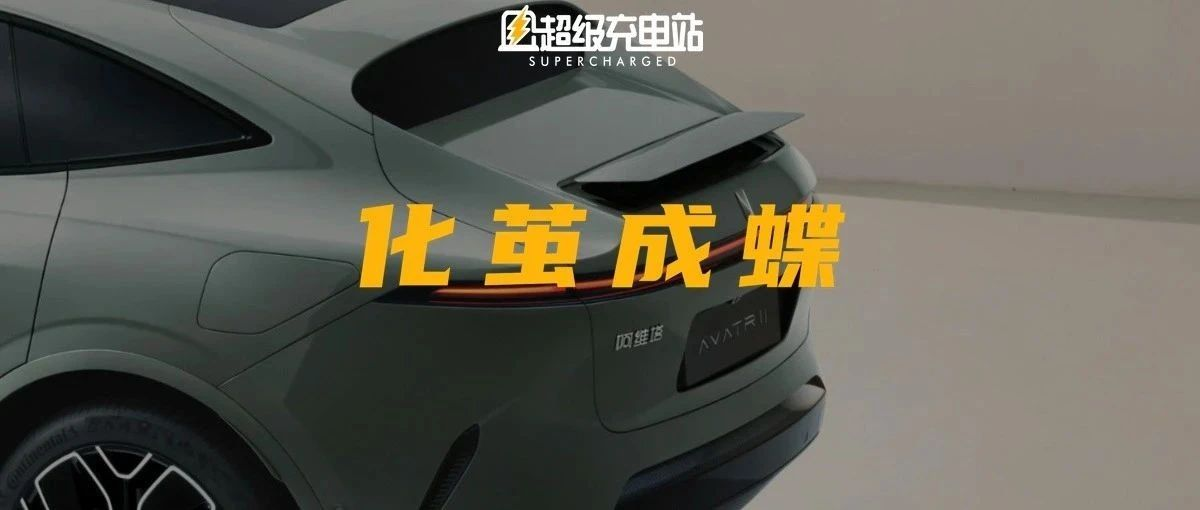Author: Li Duoxuan
Since I was a child, I have had a dream of being a martial arts master, dreaming of flying and wall-hopping like the heroes in martial arts dramas.
Recently, a Daoist priest, Chen Shixing, from Wudang Mountain jumped up and his legs seemed to step on the clouds. He was quickly propelled onto a four-meter-high wall, and a video of this viral moment spread rapidly on the Internet. Even American tourists who visited Wudang Mountain, known as a Taoist holy land, were amazed, saying that China is not scary, but what is scary is the Taoist priests who can perform light skills on Wudang Mountain.
According to the introduction of Master Chen Shixing, in order to practice light skills as elegant as his, one must start from the basics, like practicing horse stance. Only when the foundation is stable, can one master the skills effectively.
In fact, this is not only applicable to martial artists, but also to automobiles.
For current electric vehicles, many people focus on their three-electric systems, believing that the battery, motor, and electric drive are the core components of a pure electric vehicle. On the other hand, the vehicle chassis is often ignored as it is not directly visible or touchable.
Regarding the difficult road of chassis development in China’s auto industry, I’m willing to compare it to the three stages of a butterfly’s life.
Stage One: From Nothing to Something, Growing under Soil
Looking back at the mid-to-late 1990s, the cars running on the streets were either imported Volkswagen Passats or CKD-produced Xia Li or small bread cars. As for domestically-made cars, they were still like larvae of a butterfly growing in mud, not yet officially launched in the market.
Finally, around the turn of the century in 2000, the larvae hatched. Geely, which was originally engaged in home decoration and electrical appliances, BYD, which started with batteries, and Chang’an, represented by military industry enterprises, successively joined the army of car manufacturing, as “new force” car companies, began their own journey of car manufacturing.
In the beginning, these “new forces” car companies lacked funds and technology, and most of them relied on imitation and emulation to manufacture cars, which today can be described as “can be driven.” At that time, most of the chassis still used old-fashioned non-independent suspension, with poor material quality. And even some car models experience frequent problems such as chassis corrosion.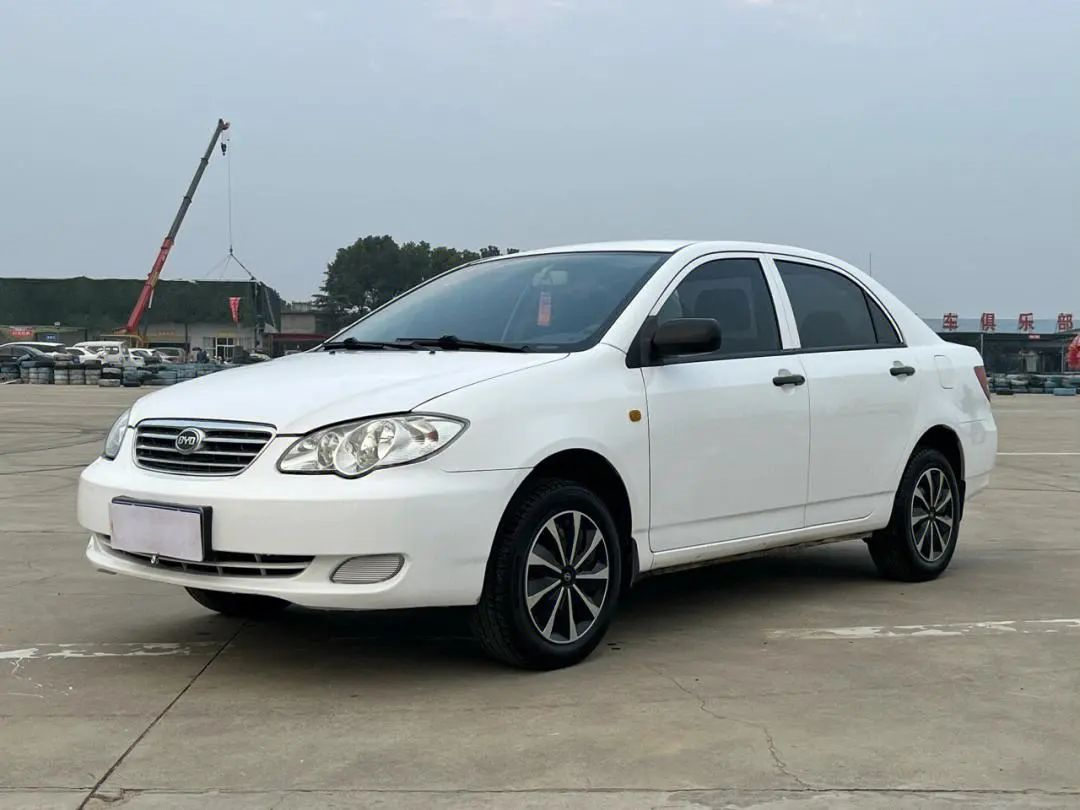
Stage Two: Cocooning and Expanding Strength
The year 2014 marked the beginning of the development of new energy vehicles in China. At that time, most of the Chinese automakers had already captured the low-end new energy market, but unfortunately, they were limited by cost and lacked innovative awareness in the development of their products. Most of the models were oil-electric hybrid ones and the chassis lacked innovation, mostly relying on adding more batteries.
To be honest, during this era, although the Chinese automakers had made some improvements to the structure of the automobile chassis, and quite a large number of models had installed independent suspension and enhanced the material used in the chassis, due to their limited technological strength, the tuning level of the chassis was slightly inferior to the foreign joint venture automakers, and the innovation was also few and far between.
However, it must be said that the Chinese automakers at the time had begun to realize the importance of chassis development technology, each increasing research and development investment, accumulating strength, just like a butterfly larva turning into a pupa which, despite its simple appearance, has a vision and hope of becoming a butterfly.

Stage Three: Breaking Out of the Cocoon and Shining in the World
Fast forward to the present day, Chinese domestic automakers have all embarked on their brand upgrading path, with “overtaking on the bend and reversing the situation under unfavorable winds” having long been brought to the table.
In 2022, China’s new energy vehicle sales continued to grow explosively, with production and sales reaching 7.058 million and 6.887 million units respectively, an increase of 96.9% and 93.4% YoY, respectively, and global sales accounted for more than 60%, maintaining the world’s first place for 8 consecutive years.
Behind the soaring sales of new energy vehicles in China, what is truly inspiring is that Chinese new energy automakers have broken out of their cocoons and made continuous breakthroughs in brand upgrading, becoming more confident. Various high-end brands have been frequently released, with prices exceeding RMB 400,000, breaking free from the shackles of low-end tags. Increasing efforts have been made by each automaker in the research and development and tuning of their chassis. Advanced technologies such as pure electric architecture, electric four-wheel drive, and CTC/CTP/CTB batteries have sprung up like mushrooms. The overall workmanship and materials of the chassis are leading the industry.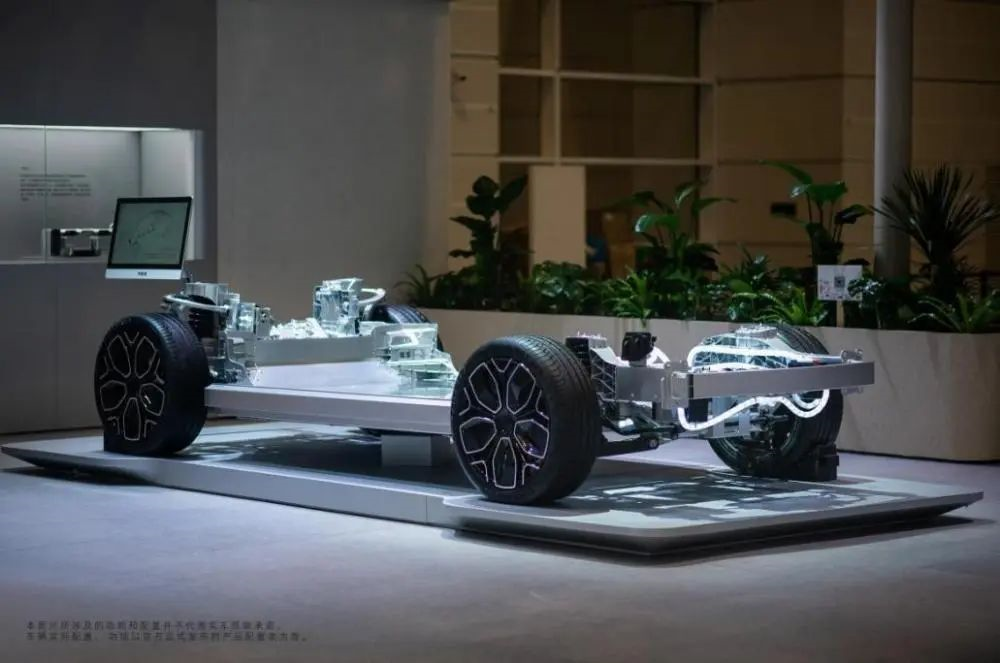
Stability of Chassis is Key to the Platform
As the first product born of the CHN, a brand-new generation of intelligent electric vehicle technology platform, the Avita 11 was highly anticipated from the very beginning. With the support of Chang’an Automobile, Huawei, and CATL, the platform has a strong foundation in chassis tuning, which achieves both driving pleasure and ride comfort. It can be said that it is impossible to keep a low profile.
When the Avita 11 was first released, a group of experienced drivers gave it high praise after test driving it. Especially as a sports-oriented pure electric vehicle, what are the black technologies of Avita 11 in chassis tuning? How does it compare to the popular Tesla Model Y in the same segment?

When it comes to understanding a car’s chassis, disassembly is undoubtedly the most direct and effective way. Recently, a third party has disassembled the Avita 11 and the Tesla Model Y, taking this opportunity to explore the two cars.

The above picture shows the photos of the two cars after disassembly. In order to better compare the chassis components, structures and materials of the two cars, we divided the entire chassis into front, middle, and rear parts for analysis.
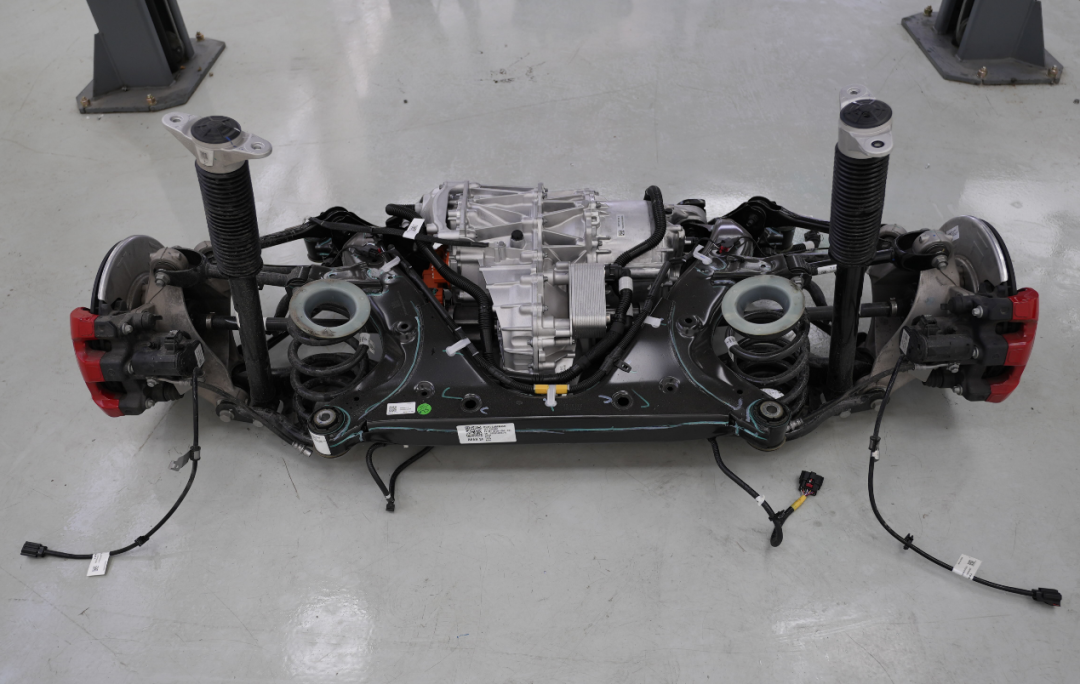
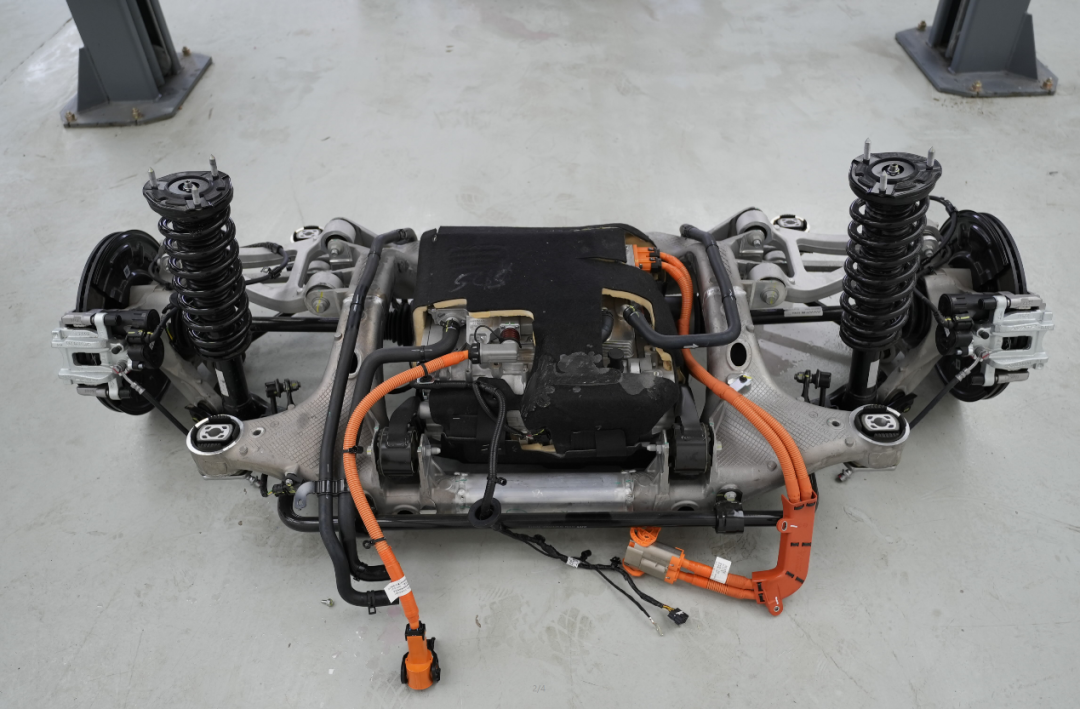 ## Chassis PK Trilogy – Front Suspension
## Chassis PK Trilogy – Front Suspension
First of all, let’s take a look at the front suspension of the two cars. In terms of vehicle suspension structure, both cars use front double-wishbone independent suspension. The advantage is high handling limit and strong rigidity, but the disadvantage is high cost and difficult maintenance.
Although the suspension structure is similar, there are still some differences in materials. After all, the price of Tesla Model Y is lower. The front part of the chassis of Avita 11 including the subframe and upper control arm are made of steel, while Avita 11 uses aluminum alloy in these parts. In the automotive industry, there is a saying “one pound lighter under the spring and ten pounds lighter on the spring.” It can be seen that Avita 11 is more solid and generous in terms of materials for the chassis. Its driving quality and driving performance will be better.

As for the front brake devices, Avita 11 and Tesla Model Y both use 4-piston calipers manufactured by Brembo. The difference is that the brake disc of Avita 11 is 10mm larger than that of Tesla Model Y. After actual measurement, the zero-to-hundred braking distance of Avita 11 is 34.9m, while that of Tesla Model Y is 35.3m. It should be noted that the weight of Avita 11 is larger than that of Model Y, but the braking distance is shorter. This achievement is a good level among pure electric vehicles. However, through the intuitive comparison of data, Avita 11 has better brake safety performance than Tesla Model Y.
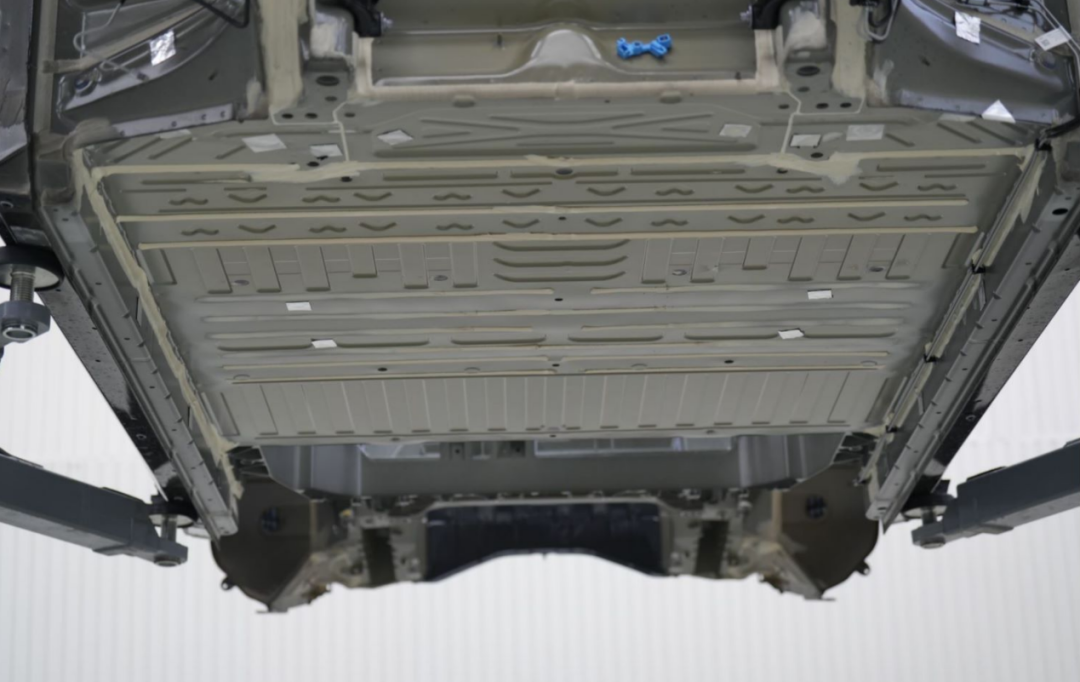
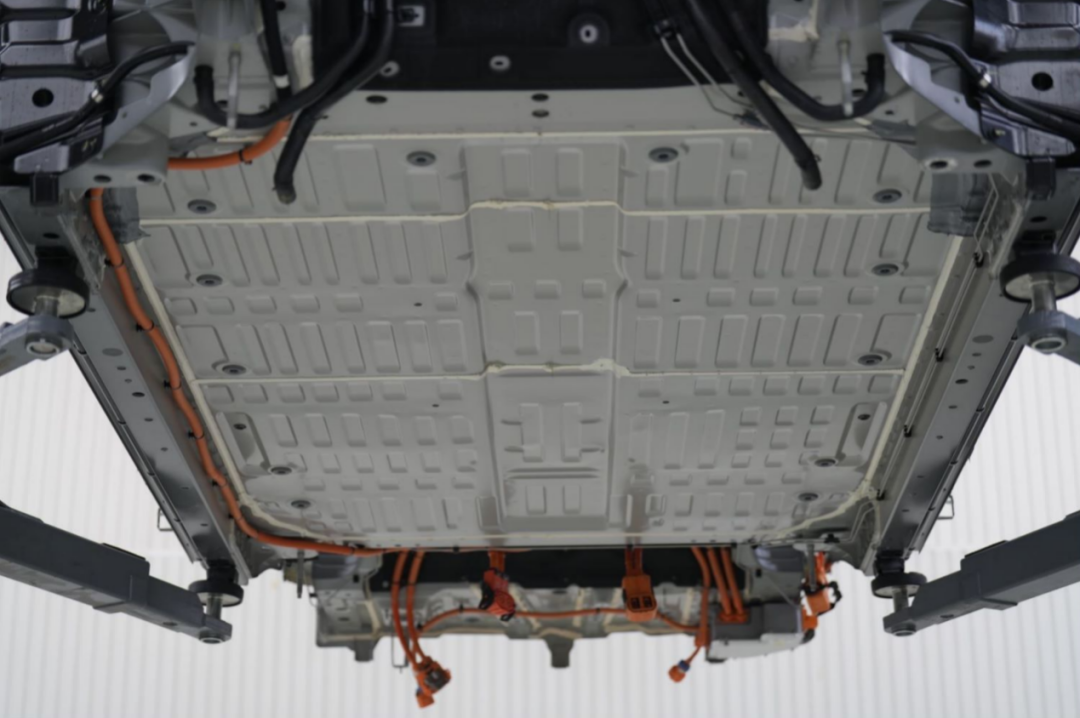
Chassis PK Trilogy – Middle Part of ChassisFrom the figure above, it can be seen that the batteries of both cars are installed flat in the middle of the chassis without any protrusions. In terms of materials, Avita 11 uses more aluminum alloy materials in the chassis, which helps to reduce the unsprung mass and improve handling performance.
In terms of details, the Avita 11 chassis wiring harness is fully wrapped in a corrugated tube, while some high-voltage wiring harnesses of Tesla Model Y are only wrapped with a layer of electrical tape. In addition, Avita 11 performs better than Tesla Model Y in terms of filling chassis holes, which not only benefits the life of the chassis, but also improves the NVH performance in the cabin.
Speaking of NVH, I want to praise the Avita 11, which is equipped with China’s first RNC active noise reduction technology. By linking the chassis sensor to the RNC noise reduction microphone in the car, it can reduce the cabin noise by neutralizing sound waves, improve the quietness of the passenger compartment, and make driving more comfortable.
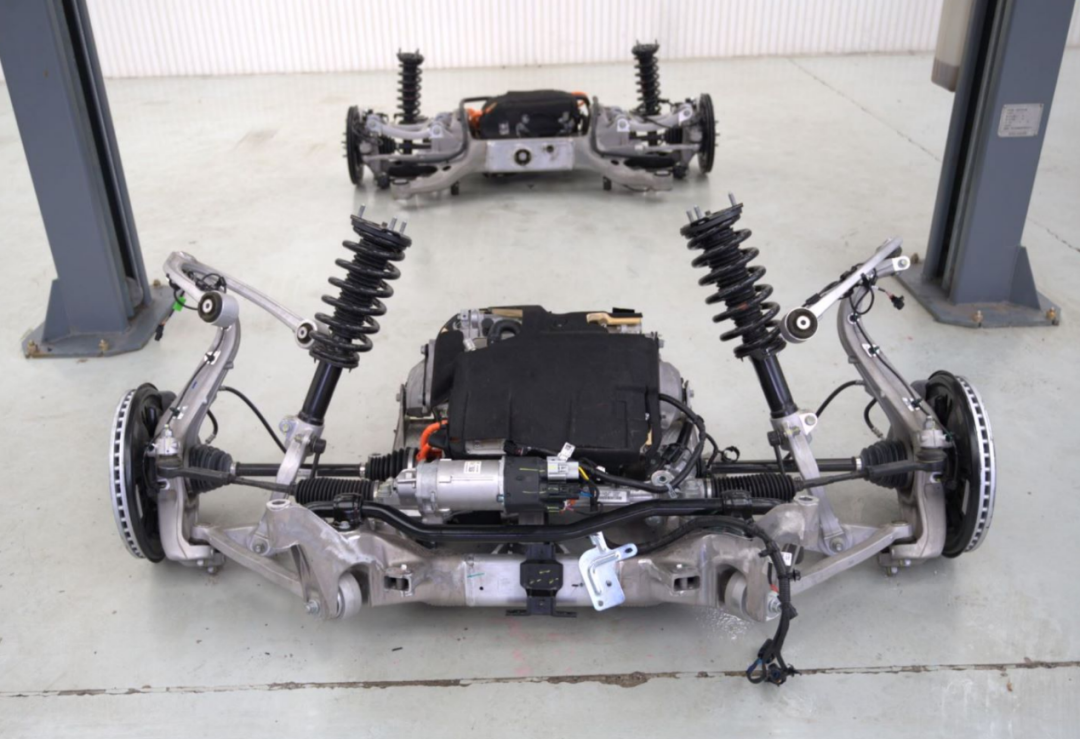
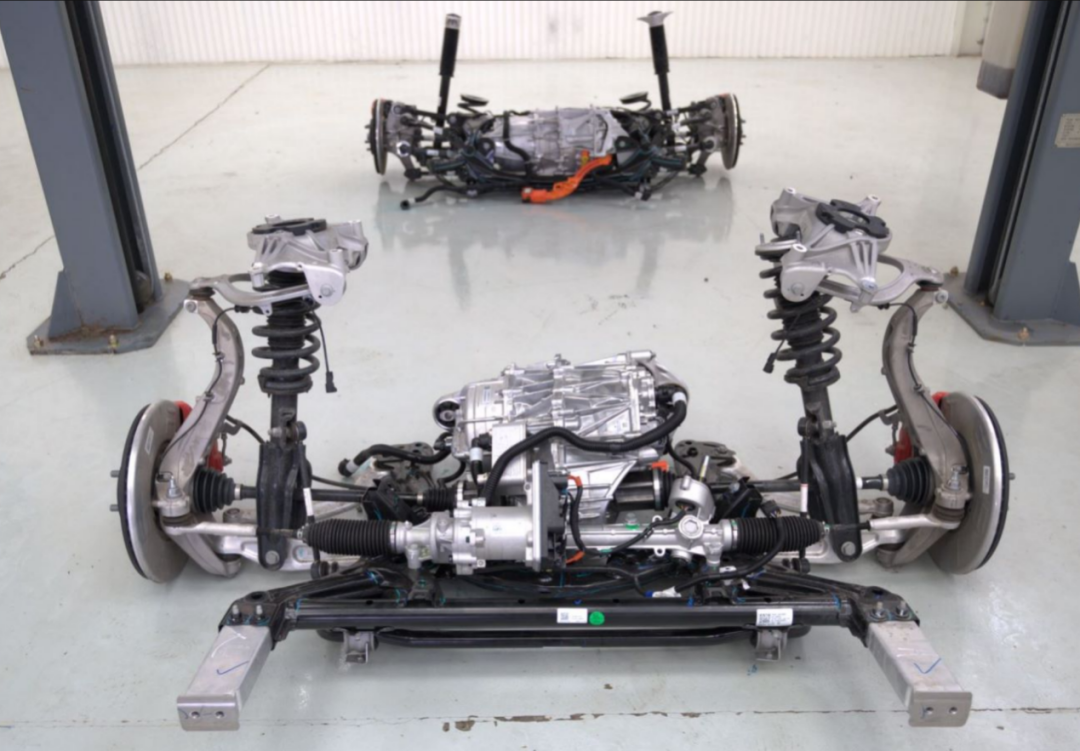
Chassis PK Trilogy —— Rear Suspension
The rear suspension of both cars is similar in structure, with the main difference being the materials used. It is worth noting that Avita 11 has a larger rear subframe bushing. With an 80mm diameter bushing, it can effectively reduce the bounce of the rear of the car, thereby improving the stability of the car’s posture during driving, and achieving an excellent driving experience.
From the figure below, it can be seen that the entire chassis is almost made of aluminum alloy material. If the aluminum alloy material of the front and rear circular subframes is only the first step in lightweighting and improving the overall vehicle performance, then the large amount of aluminum alloy used in the body of the bare chassis can not only improve the above-mentioned performance, but also improve the vehicle’s handling performance and NVH performance.
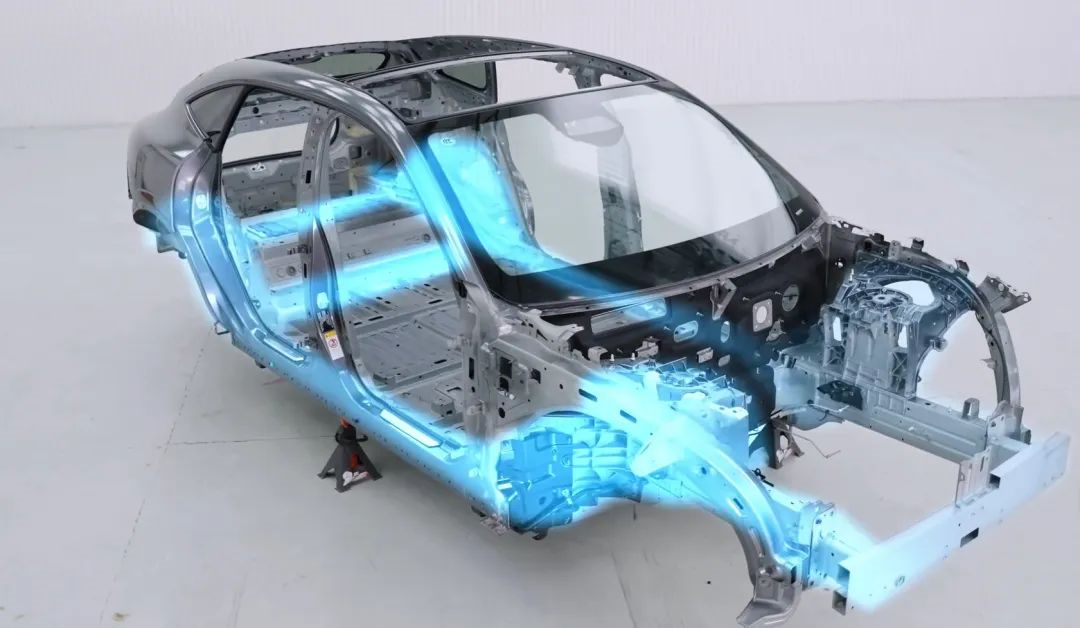 ## Precaution for safety
## Precaution for safety
The Avita 11 adopts a dual-redundant safety design in the chassis, which enables it to meet the requirements of advanced intelligent driving assistance and safety by using the dual-redundant design in the chassis domain and the intelligent driving domain. The “dual-redundant steering electric control system (BD-EPS) + dual-redundant brake electric control system (MKC1+HBE)” combined with the highly redundant communication capability of the intelligent driving domain, provides Avita with the technical foundation to update and iterate L3 and above intelligent driving functions for the entire vehicle. It can also ensure that the complete loss of assistance due to internal or external single-point failure does not occur, thereby providing users with safe travel.
It is reported that the Avita 11 uses two large and small battery packs in the whole vehicle, which can support the vehicle’s automatic parking function with small battery packs when the large battery packs cannot supply power in extreme cases, effectively minimizing safety hazards. Based on the dual power supply design, the Avita 11 is also equipped with a dual power supply system, which can more effectively ensure the user’s safe use of the vehicle.

In addition to enhancing driving safety, the dual-redundant safety design of the Avita 11 also plays a vital role in improving its intelligent driving assistance function. Based on 34 intelligent driving sensors such as LIDAR, millimeter-wave radar, camera, and ultrasonic radar, etc., the Avita 11 has 360-degree perception function within the visual range, which can achieve high-order intelligent driving abilities under full-scenario coverage.

Huawei’s electric drive system and intelligent cockpit, Changan’s vehicle manufacturing capabilities, and CATL’s battery cell manufacturing and battery packaging solutions collectively constitute the Avita 11. Through today’s chassis dismantling comparison, we can clearly see the efforts made by the Avita 11 in the chassis, which is not only ahead in design but also provides dual-redundant protection for users. It shows superior materials and workmanship when compared to Tesla Model Y, and can provide users with more enjoyable driving experience and comfortable riding experience.# Avita 11: Climbing Upwards of China’s Pure Electric Car Industry
The Avita 11 truly embodies the Chinese pure electric car industry’s upward climb, while also reflecting the Chinese car manufacturers’ serious considerations towards intelligent electric car manufacturing industry to a certain extent.
This article is a translation by ChatGPT of a Chinese report from 42HOW. If you have any questions about it, please email bd@42how.com.
